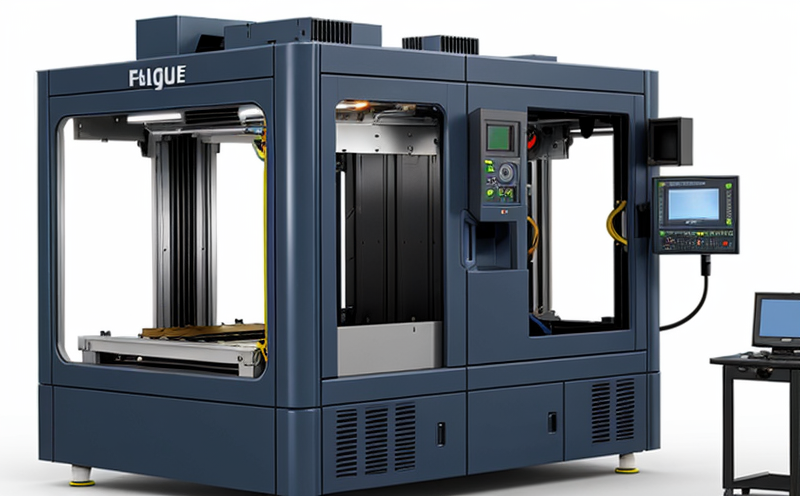ASTM E647 Fatigue Crack Growth Testing
The ASTM E647 standard specifies a method to determine the fatigue crack growth behavior of materials used in additive manufacturing (AM) and other engineered components. This testing is crucial for ensuring that parts subjected to cyclic loading meet their service life requirements while maintaining structural integrity.
This test evaluates the resistance of AM printed components under cyclic stress, which can help identify potential weaknesses or flaws before they become critical issues during operation. By simulating real-world conditions, ASTM E647 provides a reliable assessment that aids in improving design and manufacturing processes for additive manufactured parts.
The process involves creating an initial crack on the surface of the component followed by cyclic loading to observe how the crack grows over time. The fatigue life of the part can then be determined based on its ability to resist further crack propagation without failure. This information is vital for ensuring safety and reliability in applications where critical performance under stress is essential.
Understanding the behavior of cracks within additive manufactured materials helps engineers optimize designs, select appropriate alloys, and set realistic expectations regarding component lifetimes. Properly conducted ASTM E647 testing ensures that additive manufacturing processes produce parts capable of enduring expected operational stresses without compromising structural integrity.
The procedure outlined in ASTM E647 is particularly useful for industries reliant on lightweight, high-strength components such as aerospace, automotive, and medical fields. It allows manufacturers to validate their products against industry standards ensuring compliance with regulatory requirements while enhancing overall product quality.
For example, in the aerospace sector where weight reduction plays a significant role, accurate fatigue testing ensures that lighter parts do not compromise safety or operational capabilities. In contrast, in automotive manufacturing, this test helps ensure that critical components like engine blocks can withstand rigorous use over extended periods without failure.
Applied Standards
| Standard | Description |
|---|---|
| ASTM E647-18 | Standard Test Method for Fatigue Crack Growth of Materials Using Surface Cracks |
| ISO 5933:2002 | Guidelines for the performance of cyclic loading tests and determination of fatigue strength properties |
| EN 16740-2:2018 | Application of additive manufacturing in aerospace - Part 2: Testing, quality assurance and certification |
Why Choose This Test
- Provides insights into the fatigue behavior of materials used in additive manufacturing.
- Ensures compliance with international standards and regulatory requirements.
- Helps optimize designs for improved performance under cyclic loading conditions.
- Aids in selecting appropriate alloys based on their fatigue crack growth characteristics.
Competitive Advantage and Market Impact
Adopting ASTM E647 fatigue crack growth testing offers several competitive advantages, including:
- Enhanced product reliability leading to increased customer satisfaction.
- Reduced risk of premature failure reducing maintenance costs and downtime.
- Potential for innovation through better understanding of material properties.
The market impact lies in meeting the demand for safer, more durable products across various industries. By embracing this testing methodology, companies can stay ahead of competitors by delivering higher quality products that meet strict safety standards and regulatory requirements.





